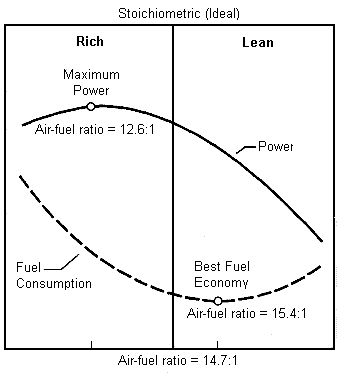Z28 said:
When I ran it, I ran a 13.2 with 4.5 fuel pressure. I raised it to 6.5 and ran the 12.9. I didn't try for higher, I thought 6.5 was pushing limits. I do have a return line.
Another thing, the total timing is set at 34.
Fuel float bowl levels are right at the bottom of sight glass.
Through a couple of trial & error tunes and backfires through the carb, I replaced the power valve with a brand new one. This was all prior to the race track. I'll research that a bit more though.
are you referring to power valve NUMBERS or fuel pressure measured at the carb inlet port?
fuel pressure should not exceed 5 psi in most carb applications
if you want to lean it out youll want a lower numerical power valve, IE if your now getting richer as the throttle opens Id go back to a 4.5 power valve and slightly larger primary carb jets, keep in mind jets provide the base line ,power valves ADD fuel as the vacuum drops as air flow increases.
btw Ive generally found you would be best served trying for about 13.7:1-14.2:1 fuel/air ratio at idle with a consistent and predictable but slow enrichment curve that gets you close to about 12.6:1 at wide open throttle above about 3500rpm, this tends to reduce plugs getting fouled
POWER ENRICHMENT SYSTEM
The power enrichment system supplies additional fuel to the
main system during heavy load or full power situations. Holley
carburetors utilize a vacuum operated power enrichment system
and a selection of power valves is available to “time” this sys-
tem’s operation to your specific needs.
Each Holley power
valve is stamped with a number to indicate the vacuum opening
point. For example, the number “65” indicates that the power
valve will open when the engine vacuum drops to 6.5" or
below. An accurate vacuum gauge, such as Holley P/N
26-501,
should be used when determining the correct power
valve to use. A
competition or race engine which has a long
duration high overlap camshaft will have low manifold vacuum
at idle speeds. If the vehicle has a manual transmission, take
the vacuum reading with the engine thoroughly warmed up and
at idle. If the vehicle is equipped with an automatic transmis-
sion, take the vacuum reading with the engine thoroughly
warmed up and idling in gear. In either case, the power valve
selected should be 1/2 the intake manifold vacuum reading
taken. EXAMPLE: 13” Hg vacuum reading divided by 2 = 6.5
power valve. If your reading divided by 2 lands on an even
number you should select the next lowest power valve. EXAM-
PLE: 8” Hg vacuum reading divided by 2 = 4 power valve.
Since there is no #4 power valve you should use a 3.5.
Most of the popular Holley “Street Legal” and “Street
Performance” carburetors incorporate a power valve blow-out
protection system. A special check valve is located in the throt-
tle body expressly for this purpose. This check valve is
designed to be normally open but will quickly seat to close off
the internal vacuum passage when a backfire occurs. Once
closed, the check valve interrupts the pressure wave caused by
the backfire, thus protecting the power valve.
If you have a carburetor older than 1992 (or you have experi-
enced an extreme backfire) and expect a blown power valve,
use this simple test. TEST: At idle turn your idle mixture screws
(found on the side of the metering block) all the way in. If your
engine dies the power valve is not blown


